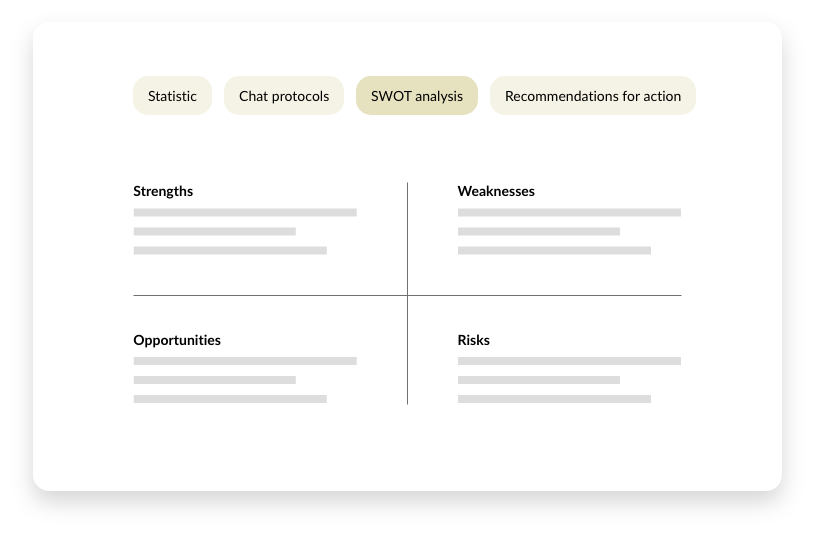What is a competitive analysis?
A competitive analysis is a systematic examination of a company’s most important competitors.
It involves analyzing how competitors market their products, which target groups they address, which messages they use to reach their customers and which pricing strategies they pursue.
By evaluating and comparing marketing strategies, companies can adapt their own offers and marketing measures in order to stay one step ahead of the competition.
The importance of competitive analysis in marketing
In marketing, it is essential to understand the position of your own company in relation to your competitors.
This enables companies to specifically emphasize their strengths and compensate for weaknesses.
A well-founded competitive analysis helps with this:
- Consolidate its market position:
By having a clear positioning that stands out from the competition. - Increase customer satisfaction:
As companies learn to better address their target group through analysis. - Promote innovation and agility:
Competitors’ trends and strategies are recognized more quickly and adopted or adapted where necessary.
Methods of competitive analysis in marketing
1st method: SWOT analysis of competitors
A SWOT analysis (Strengths, Weaknesses, Opportunities, Threats) can be used to work out the strengths and weaknesses of competitors.
This analysis shows where the competition is better positioned and where the company’s own advantages lie, which can be specifically emphasized in communication.

2nd method: Benchmarking
Benchmarking compares key performance indicators (KPIs) and marketing strategies to determine how the company performs in comparison to others.
This includes aspects such as customer satisfaction, reach, conversion rate or brand awareness.
Benchmarking makes it possible to adopt the best practices in the industry and address weaknesses in a targeted manner.
3rd method: Analysis of target groups and needs
By analyzing which target groups competitors are addressing and how these target groups are addressed, companies can target their own marketing more precisely.
Companies can thus identify niches or adapt their messages to reach a broader or more precise target group.
4th method: Market analysis with Porter’s Five Forces
Michael Porter’s five forces model helps to systematically analyze the competitive environment.
The five forces – threat from new suppliers, bargaining power of customers, bargaining power of suppliers, threat from substitute products and rivalry among existing competitors – show which factors influence the market.
This analysis enables companies to align their marketing with the intensity of competition.

5th method: Product analysis
The product analysis examines the product features and benefits of the competition.
It evaluates which functions and features are particularly attractive to customers.
In marketing, this analysis can be used to make your own products more attractive through differentiating features and to clearly communicate why they respond better to customer needs.
6th method: Social media and content analysis
Analyzing the social media presence and content of competitors provides information on how successfully they present their brand in the digital environment.
The frequency, type and reactions to competitor posts provide important insights that can improve your own content marketing.
Application of competitive analysis in marketing
After the analysis, it is important to implement the findings strategically.

Companies should:
- Define differentiation and USP (Unique Selling Proposition):
The analysis helps to identify unique selling propositions that clearly differentiate the company from the competition. - Adapt marketing messages and positioning:
By knowing the messages and strengths of competitors, the company can adjust its positioning to target a gap in the market. - Improve product development and customer service:
Insights from the analysis can be used to optimize the company’s own product and customer experience, which has a positive impact on marketing and customer satisfaction. - Optimize campaigns and channels:
By comparing the channels and campaigns of other competitors, it is possible to decide which marketing channels and formats are successful and where investments would make sense.
Conclusion
A comprehensive competitive analysis is essential in marketing in order to achieve long-term success in a competitive market.
It provides insights into the strategies of the competition and gives companies the opportunity to maximize their own potential and eliminate weaknesses.
As a result, a company can use competitive analysis to establish a clear, distinctive market position and reach its target group effectively.
A continuous look at the competition is therefore an essential pillar for sustainable marketing success and a targeted customer approach.





